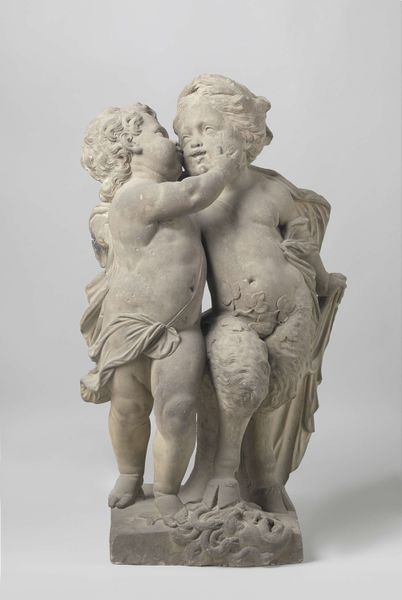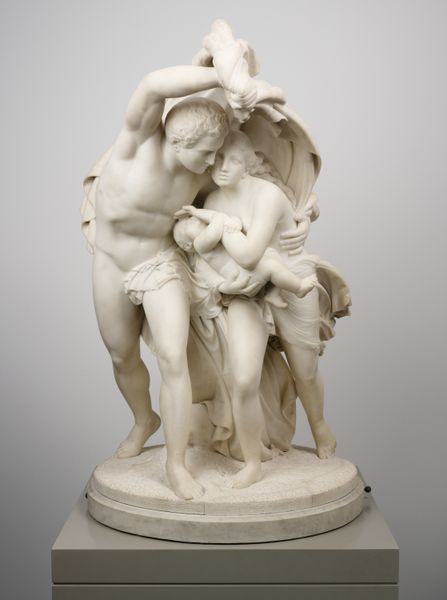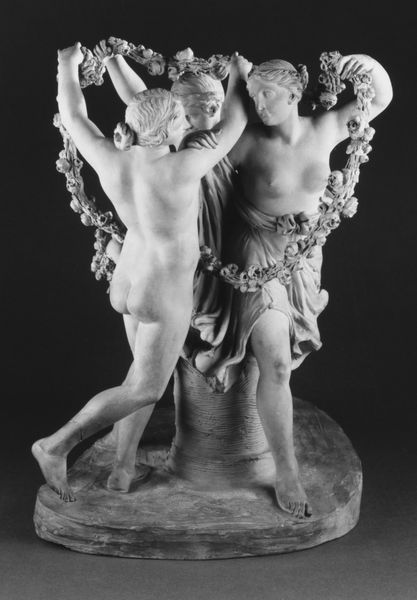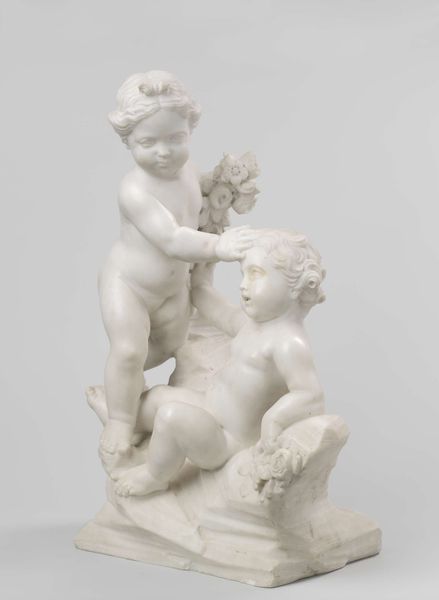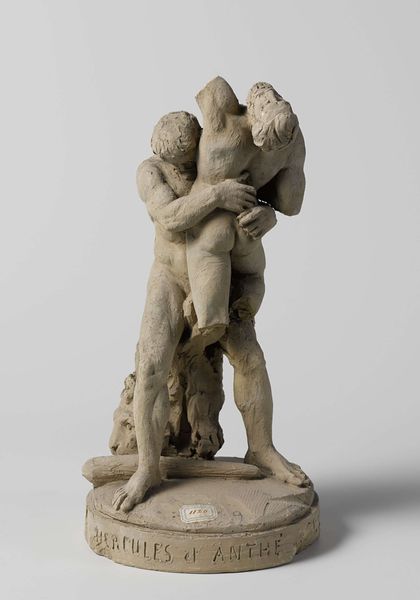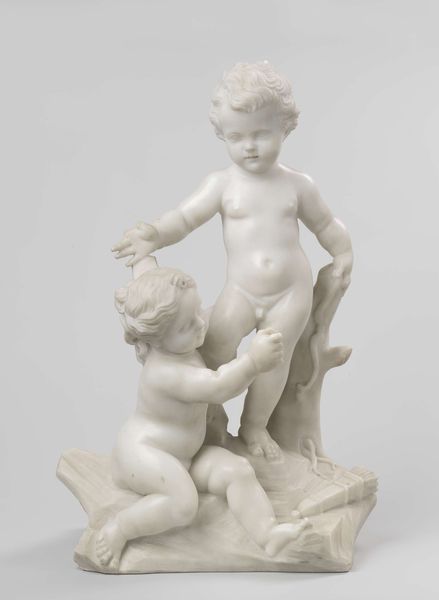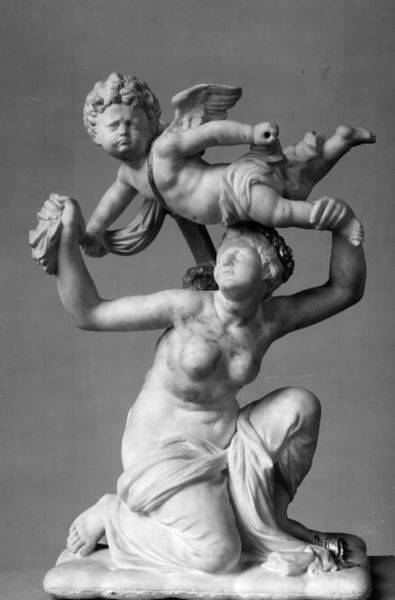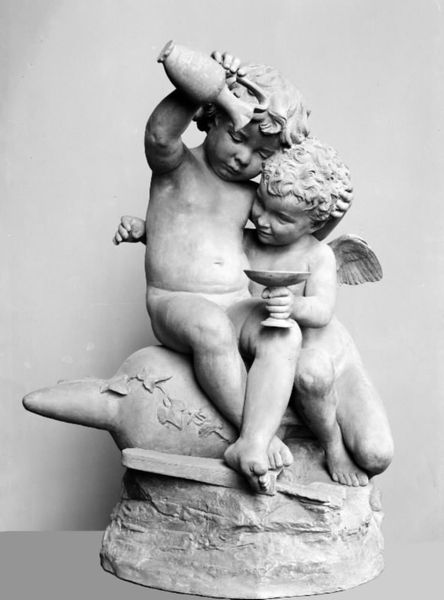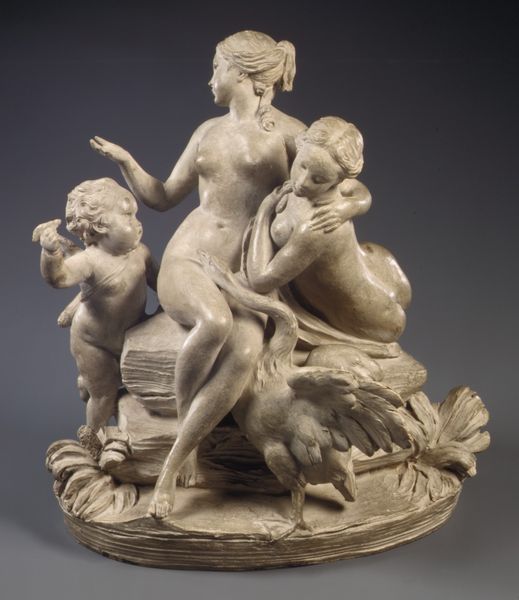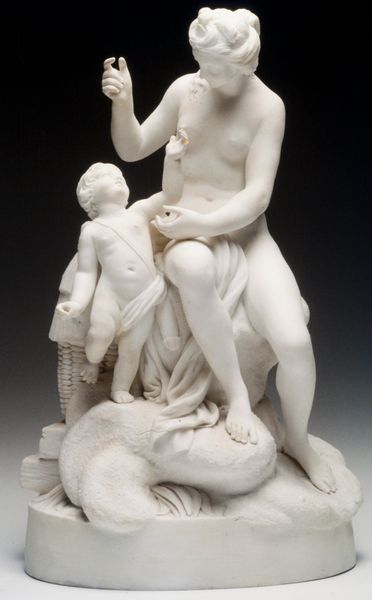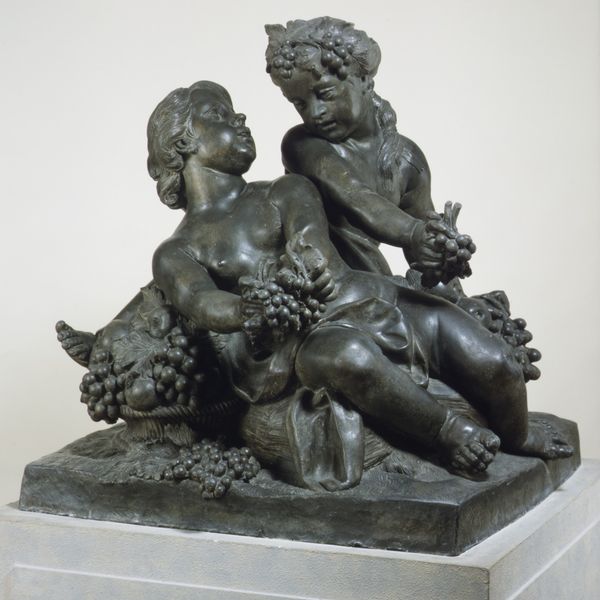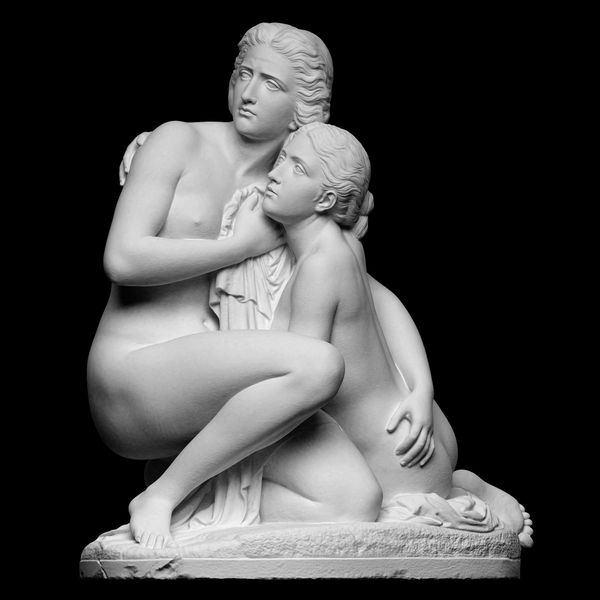
sculpture, marble
#
allegory
#
baroque
#
sculpture
#
figuration
#
sculpture
#
marble
#
statue
Dimensions: height 105 cm, depth 58 cm, width 51 cm, width 42 cm, depth 42.2 cm, weight 160 kg
Copyright: Rijks Museum: Open Domain
Editor: Here we have Jan Pieter van (I) Baurscheit’s marble sculpture, “A Boy and a Satyr Girl Fighting, Allegory of Hate,” from about 1720 to 1730. It’s quite dynamic, but what really strikes me is how the figures intertwine to create almost a single, complex form. What do you see in this piece? Curator: Formally, the intertwining is indeed paramount. Notice how the artist utilizes the Baroque aesthetic, emphasizing the curvilinear forms. The figures are locked in an embrace or struggle where it becomes difficult to discern the limbs or the contours of one from the other. The drapery acts as an accent to emphasize the implied motion of the piece. Editor: Yes, the draping definitely adds to that swirling effect! So, it’s the visual language itself that conveys the idea of “hate”? Curator: Precisely. We see an intersection of planes and counter-planes of motion that result in spatial tension. The lack of negative space, of clearly defined areas of rest, further adds to a sense of frenetic energy. This artistic handling contributes to the piece’s subject beyond mere symbolic representation. Editor: I never considered negative space could communicate emotional unease! It’s less about what's there, but what's absent! That’s truly eye-opening. I’ll never see sculpture the same way again. Curator: Art unveils its complexity as one learns to deconstruct and appreciate how form impacts our experience of subject. Now, how does the weight and the choice of marble impact this piece?
Comments
No comments
Be the first to comment and join the conversation on the ultimate creative platform.

